Estonian economy
According to European Commission growth of real GDP in Estonia has dropped in 2016 but should pick up with external demand. In 2017 real GDP in Estonia is expected to recover to 2.3% outstripping EU average by 0.4% and in 2018 to 2.6%, which in 0.8% higher than the respective forecasted EU average.
Change in GDP chain-linked volume (%)
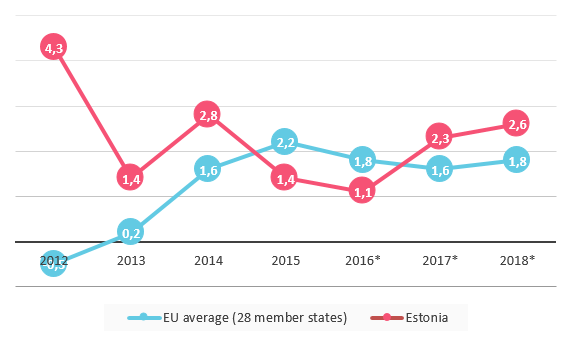
*forecast of European Commission
Source: Eurostat (as of 06.02.2017), European Economic Forecast of Autumn 2016 (European Commission)
According to Ministry of Finance of Estonia decrease in prices is over and inflation is expected to increase remarkably in the following years.
In 2017 inflation rate is expected to increase up to 2.7% due to effects of external factors, increase in services' prices and tax hikes.
Inflation rate
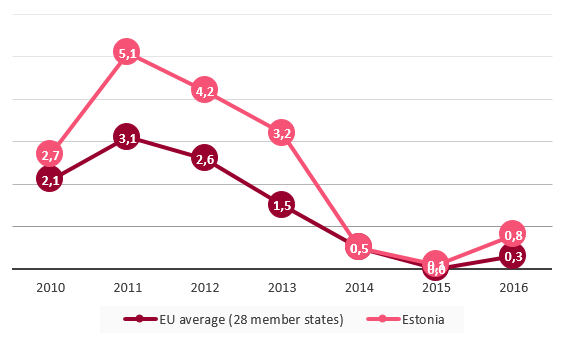
*forecast of Ministry of Finance of Estonia
Source: Ministry of Finance of the Republic of Estonia (Forecast of Summer 2016, as of 15.09.2016)
Rapid wage growth is expected to slow down in following years and labour productivity in the other hand to increase rapidly.
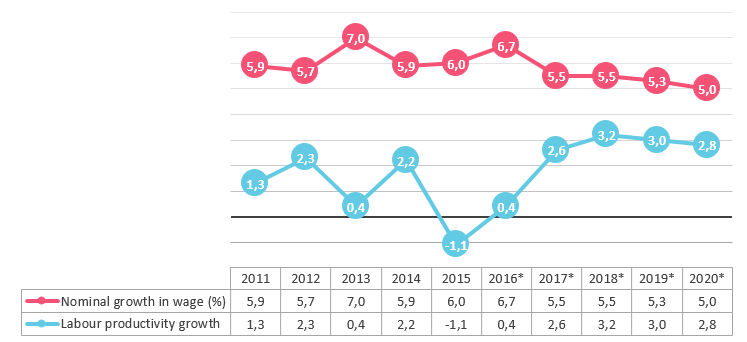
*forecast of Ministry of Finance of Estonia
Source: Ministry of Finance of the Republic of Estonia (Forecast of Summer 2016, as of 15.09.2016)
According to Statistics Estonia, in the 3rd quarter of 2016 the unemployment rate was 7.5%, which was by 2.3% higher compared to the 3Q of 2015.
The growth in number of unemployed people however, can mainly be explained by the increase in employment rate growth.
The decrease in the number of persons inactive in the labour market might have been influenced by the Work Ability Reform started from 01.01.2016.
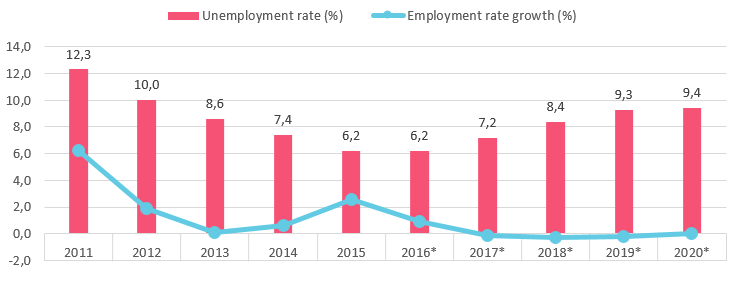
*forecast of Ministry of Finance of Estonia
Source: Ministry of Finance of the Republic of Estonia (Forecast of Summer 2016, as of 15.09.2016)
Working-age population
Estonian labour force (people aged 15-74 in employment) was in average in 2016 approximately 691 th according to Statistics Estonia.
Approximately 290 th people were inactive (people who do not wish to work or are not able to).
Source: Statistics Estonia
State budget
The Riigikogu passed the state budget for 2017, planned revenue is 9,48 EUR bn and planned expenditure is 9,66 EUR bn.
According to Eurostat, as of 2016Q3, Estonian Goverment debt to GDP ratio is continiously the lowest amongs European Union memberstates.
Source: Statistics Estonia
General government budget
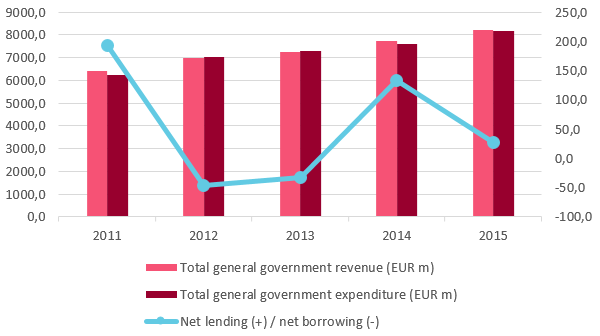
Source: Bank of Estonia, updated 14.02.2017
Eurostat News release
Riigikogu approved the next year's state budget

Source: Ministry of Finance of the Republic of Estonia (Forecast of Summer 2016, as of 15.09.2016)
The foreign trade balance is charateristic of rapidly developing country
Foreign trade (special trade system)
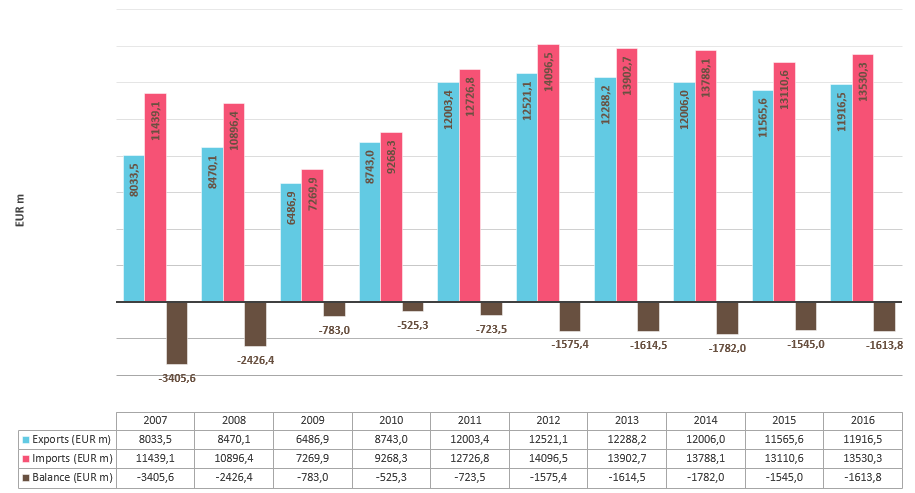
Source: Bank of Estonia, updated 14.02.2017
Primary export and import articles
Estonia's primary trade partners are Finland, Germany, Latvia, Lithuania, Poland, Russian Federation and Sweden. According to Statistics Estonia, as of 09.02.2017,
The main export articles in 2016 were as follows: Machinery and transport equipment (35%), Miscellaneous manufactured articles (17%), Manufactured goods classified chiefly by material (15%).
Primary import articles were as follows: Machinery and transport equipment (38%), Miscellaneous manufactured articles (16%), Miscellaneous manufactured articles (11%) and Chemicals and related products (11%).
Export and import 2016
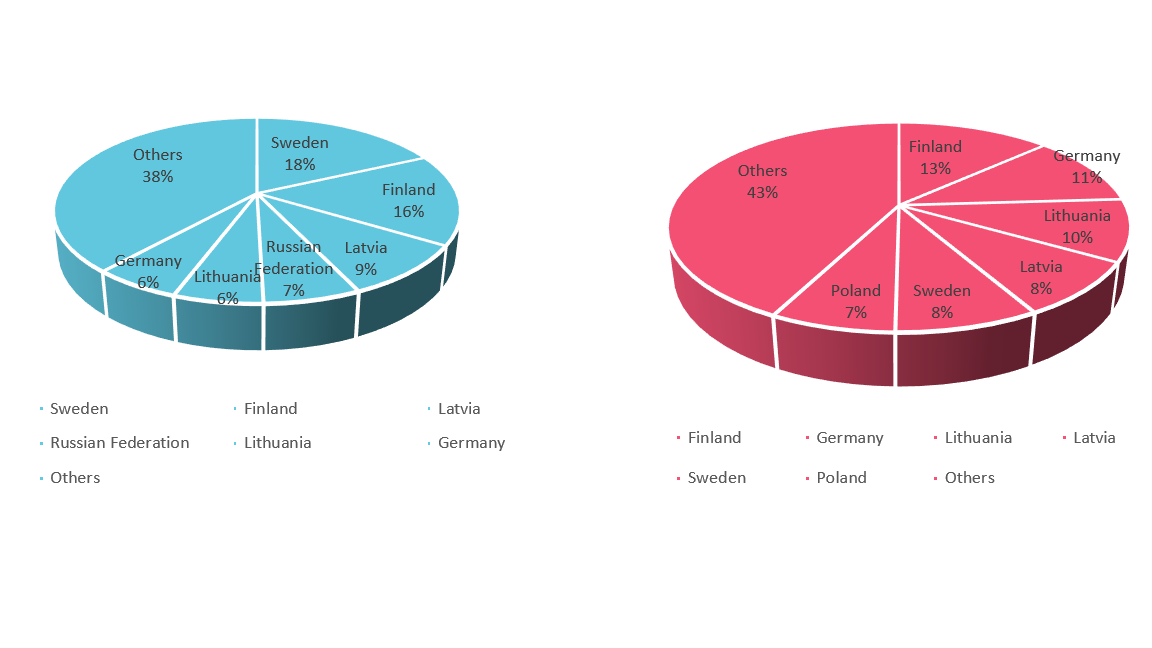
Source: Statistics Estonia, as of 09.02.2017 and BDO's calculations
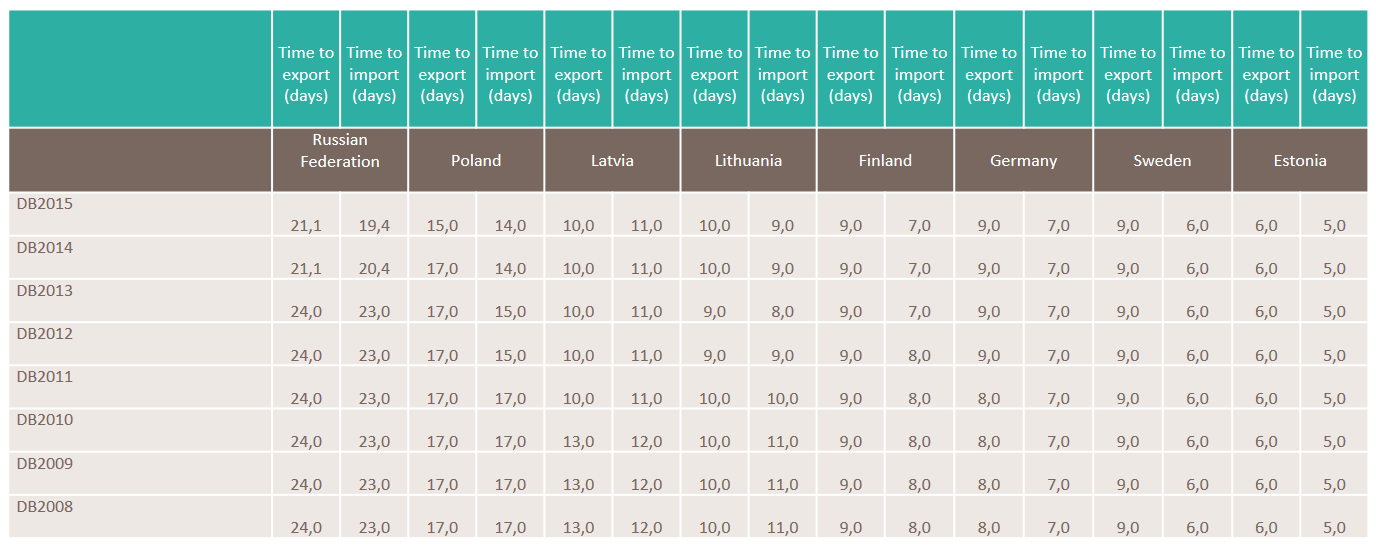
Source: Doing Business
External sector
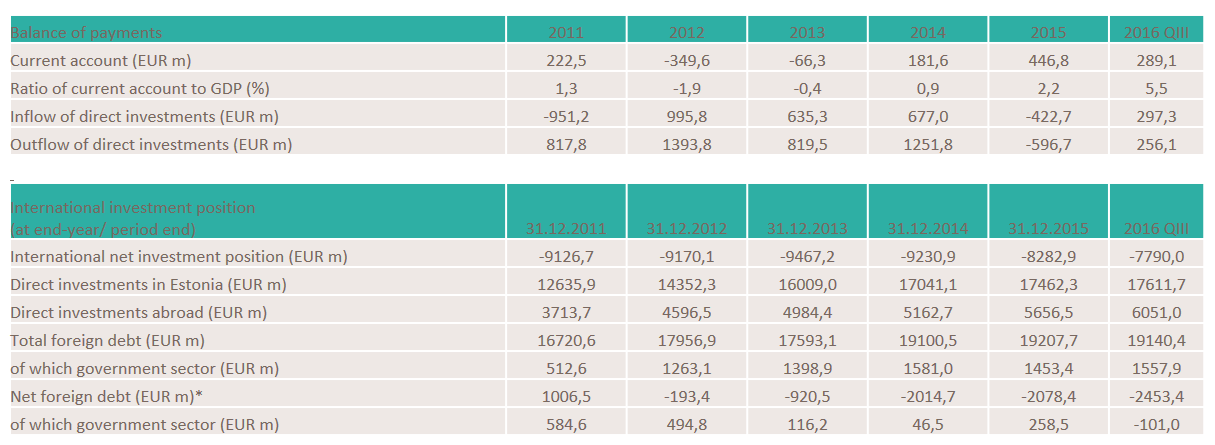
Source: Bank of Estonia, updated 14.02.2017
Direct investment in Estonia and abroad
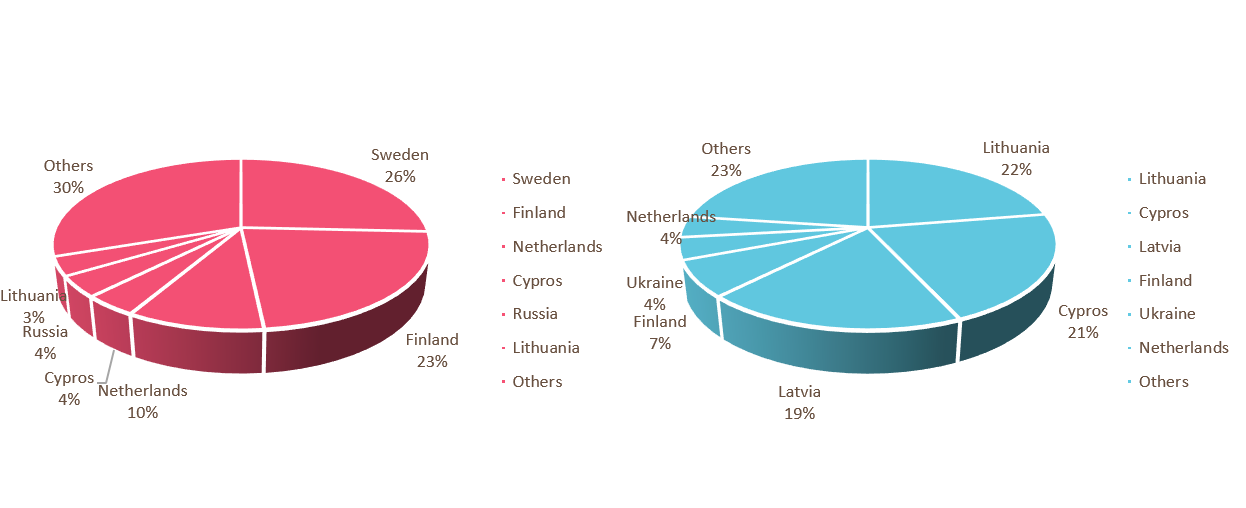
Source: Bank of Estonia, updated 09.12.2016